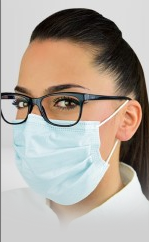We Have The Lowest Prices Ever, on Dental Operatory Equipment. No One Can Beat Us !!!! We specialize in Dental Operatory Equipment, Dental Operatory Packages, Dental Intraoral X-Ray Units, Electrosurgery Units, Dental Ultrasonic Scalers, Dental Curing Lights, Dental Intraoral Cameras, Dental X-Ray PSP Scanners, Endodontic Electric Handpieces, Soft Tissue Dental Lasers, Dental Surgical Implant Motor Systems, Dental X-Ray Units, Piezo Scalers, Apex Locators, and Laboratory Micromotors.
Maybe you have had your own dental practice for years, and you need some new dental equipment. Or, maybe you're thinking about setting out on your own to start your own practice. Whatever your situation, you want quality equipment at the best price, with little hassle. Lions Dental Supply & Equipment can help!
Discover top-tier Dental Operatory Equipment at Lions Dental Supply & Equipment. Elevate your dental practice with our comprehensive range of high-quality, cutting-edge tools designed to enhance precision, patient comfort, and practitioner efficiency.
Our Dental Operatory Equipment includes state-of-the-art chairs, lights, delivery units, and more, all meticulously crafted to meet the demands of modern dentistry. Whether you're setting up a new practice or upgrading your existing operatory, we have the solutions you need to provide exceptional patient care.
Why choose Lions Dental Supply & Equipment? With a legacy of excellence spanning years, we are committed to delivering unmatched value. We offer competitive prices, dependable customer support, and a vast inventory of trusted brands. Plus, our team of experts is dedicated to helping you make informed decisions tailored to your practice's unique needs.
Experience the difference with Lions Dental Supply & Equipment. Elevate your dental operatory, improve patient satisfaction, and streamline your daily workflow. Browse our extensive catalog today and take your practice to the next level with the industry's finest dental equipment. Your patients deserve the best, and we're here to deliver it.
We have a large selection of Dental Operatory Equipment. Many brands to choose from. We strive to get the quality name brands you know and count on, such as Engle Dental Operatory Chairs, Tuttnauer Autoclaves, L & R Ultrasonic Cleaners, Satalec Piezo Scalers, Cavitron Ultrasonic Scalers, Bonart Med Electrosurgery Units, Crest Ultrasonic Cleaners, Macan Engineering Electrosurgery Units, Nouvag Surgical Dental Implant Motors, and Parkell Dental Equipment.
We continue to build on our Small Dental Equipment line for the dental office. These items include Dental Ultrasonic Cleaners, Medical Sterilizers, Dental X-Ray Units, Dental Bleaching Lights, Dental handpieces, Surgical Dental Implant Micro Motors, Dental Soft Tissue Lasers, Endodontic Micro Motors, Endodontic Rotary Handpieces, Medical / Dental Autoclaves, Dental Electrosurgery Units, and Dental Piezo Scalers.
We Carry Disposable Surgical Face Masks In Every ASTM Level from Level 1 to ASTM Level 3 .
If you're looking for a Dental Implant Motor or a Digital X-Ray Sensor, then you came to the right place. We carry many different brands, and our Dental Equipment line is growing very fast. Also look at our Dental X-Ray Film Processors, Dental Vacuum Pumps, Dental Mobile Air Compressors, Dental Operatory Lights, and Dental Portable Delivery Units.
We have the widest selection of Dental Micro Motors around.
THANK YOU FOR ALLOWING US TO SERVE YOU.

